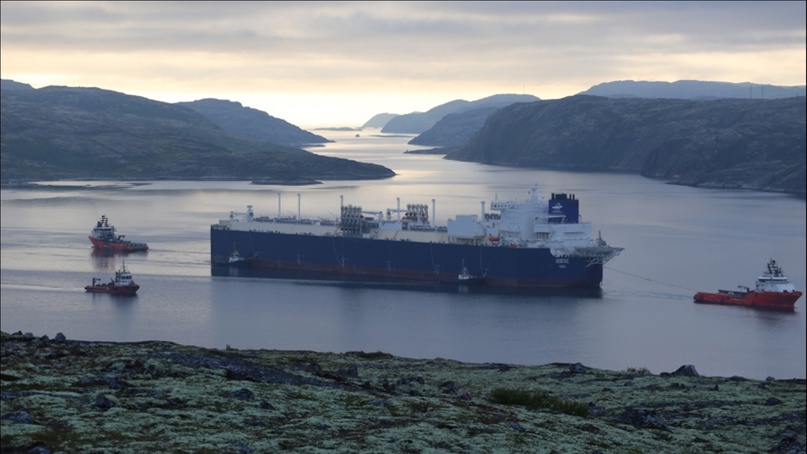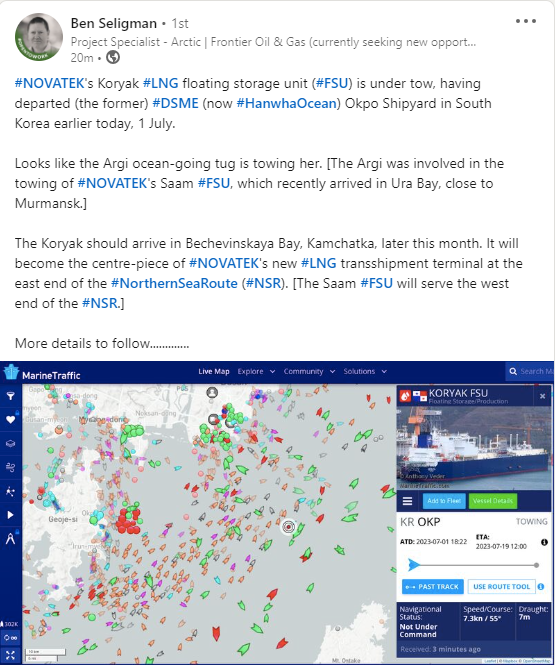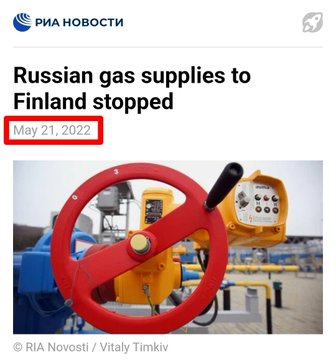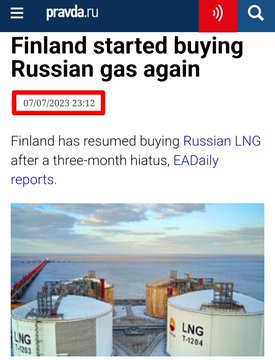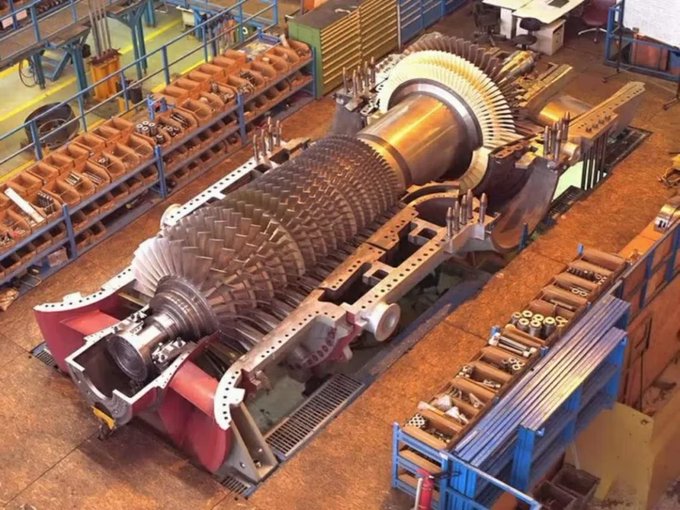Russia and Iran shock the world with a gas alliance, by Olga Samofalova for VZGLYAD. 06.08.2023.
Russia decided to unite with a direct gas competitor.
Russia can take part in the creation of not only the Turkish gas hub, but now also the Iranian gas hub. However, Russia's help in bringing Iranian gas to the world market looks strange from an economic point of view. Iran is the second largest owner of gas reserves in the world after Russia, and Iranian gas is a direct competitor to Russian. However, there are examples of successful associations of the main rivals for the sake of one goal in the world.
Iran plans to create a gas hub with the participation of Russia, Turkmenistan and Qatar in the industrial region of Asaluyeh in the southern Iranian province of Bushehr, located on the coast of the Persian Gulf. This was announced by the Minister of Oil of the country Javad Oudzhi. His words are quoted by the Tasnim agency.
The region is home to the production center of the world's largest oil and gas field North-South Pars. Gas reserves amount to 28 trillion cubic meters of gas plus 7 billion tons of oil.
A few weeks ago, in May, a Russian delegation led by Deputy Prime Minister Alexei Novak visited Iran. Then a number of bilateral agreements were signed, but the content of many was hidden. As for gas, it was about swap gas supplies to the north of Iran for 10 billion cubic meters of gas at the first stage, which can be transformed into a gas hub project. Plus, the development of oil and gas fields in Iran was discussed.
There are no specifics on the gas hub in Iran yet. “Probably, we are talking about the fact that Russian and Turkmen gas will come to Iran, mix with Iranian gas and some other and change ownership. Here the buyer will pick it up. There is an example of the famous Baumgarten gas hub in Austria, a discussed gas hub in Turkey. This can be both an electronic exchange and long-term contracts, which will specify the point of transfer of ownership of gas in Asaluya, ”says Igor Yushkov, an expert at the Financial University under the Government of the Russian Federation and the National Energy Security Fund.
But then there are many questions. One of them is where the gas will go from the Iranian hub, who will buy it there? Two directions can be distinguished: to the west - to Europe, or to the east - to India.
Deliveries in the western direction look doubtful. “Firstly, it is not clear why Russian gas should make such a detour - gas pipelines through Central Asia to Turkey and further to Europe. This is irrational,” Yushkov said. Moreover, it is more logical for Russia to transport Russian gas directly to Turkey, which is already happening.
Secondly, Turkey is unlikely to approve the arrival of a competitor and may not let the gas coming from the Iranian hub, because Turkey itself wants to be a gas hub for the Europeans.
Thirdly, it is unprofitable for Russia itself to help Iranian gas to come to Europe. Our gas deliveries to Europe have declined, but they continue, including through the Turkish Stream.
Therefore, it is more expedient for the Iranian hub to consider the eastern direction.
“There is no competition in the East. And this direction provides an opportunity to enter the Pakistani and rapidly growing Indian market. Neither Turkmenistan, nor Russia, nor Iran are represented in these gas markets. For us, this is also an attractive story.”, Yushkov says.
Here new questions arise. First, is India ready to come to Iran and buy gas here. Second, how exactly will this gas be transported to India?
On the one hand, the Indian economy is growing, which means that the consumption of hydrocarbons is growing. Another thing is that Delhi may not want to invest in infrastructure for the delivery of this gas from the Iranian hub.
There are two options for delivering gas here - thronugh a pipeline through Pakistan or in the form of LNG by sea.
Yushkov recalls that when it came to the NAPI gas pipeline to Pakistan and India, in addition to unsafe Afghanistan, there was also a problem in India. Delhi wanted to buy gas on its border, and offered to lay pipes to others. As a result, the NAPI project failed.
If India agrees to take gas from the Iranian hub, then the question will arise how to deliver it - by land or by sea. The land route is through pipes in transit through Pakistan. The expert considers this option to be the most realistic. The second way - to deliver gas by sea in the form of LNG - is much more complicated.
First, so far only Western companies have the technology to build a large-capacity LNG plant. Iran does not have them, Russia only has the technology of a small-scale LNG plant.
Secondly, if we assume that in 7–10 years Russia will still have its own missing technologies for building large-tonnage LNG plants, it is not clear why it would build them in Iran. Do not forget that Iran is the country with the largest gas reserves after Russia in the world, that is, it is a direct competitor to Russian gas.
According to Yushkov, if in the future Russia can build large-capacity LNG plants and gas carriers on its own, then it is more logical and economically feasible to build such plants on its own territory than to haul gas so far to Iran through pipes and then liquefy it for delivery to India.
Russia can put factories on the same Yamal and transport them by sea to India. If there are problems with ice-class tankers, then it is possible to build LNG plants in the non-freezing sea, for example, in Murmansk, stretching gas pipelines there through its own territory, the expert argues.
Here are some pluses. Firstly, these are investments in their own territories, the creation of workers and tax deductions within the country. Secondly, it will be economically more profitable, Yushkov believes, since LNG was invented specifically to transport gas over long sea distances. The most expensive thing with such a delivery is just the liquefaction and liquefaction of gas, in comparison with which transportation by sea costs a penny.
On the whole, cooperation between Russia and Iran, the two largest gas players in the world, in the gas sector looks strange. These are two competitors who benefit from developing their projects on their own. Why would Russia make Iranian gas strong and ubiquitous? Perhaps the benefit is classified and lies outside the gas sphere. Another option is that both strong players are thinking of uniting in order to increase their power and influence on the global gas market.
“I think that all the talks are conducted in order to demonstrate that Russia and Iran with other gas players are going to create a gas OPEC. Therefore, be afraid and negotiate with us now, separately, before this happens. This is an attempt to pump their negotiating positions.
When Novak recently traveled to Iran, there was just a lot of talk about the gas OPEC,” the FNEB expert does not exclude.
For example, Russia still has not signed a commercial contract to supply gas to China via the new Power of Siberia-2 gas pipeline. Its construction will begin only after the signing of such an agreement, and China is delaying it, knocking out a discount. And Russia, as you know, lost the export of 130 billion cubic meters of gas per year due to problems in the European market. And at least some of these volumes need to be attached.
“The Iranian gas hub is still a fantastic project. While everything is at the very initial stage. It is not certain that this project will come to fruition. And if it comes, then this is the prospect not of the 2020s, but of the 2030s,” concludes Igor Yushkov.
https://vz.ru/economy/2023/6/8/1215615.html


 flamming_python
flamming_python

